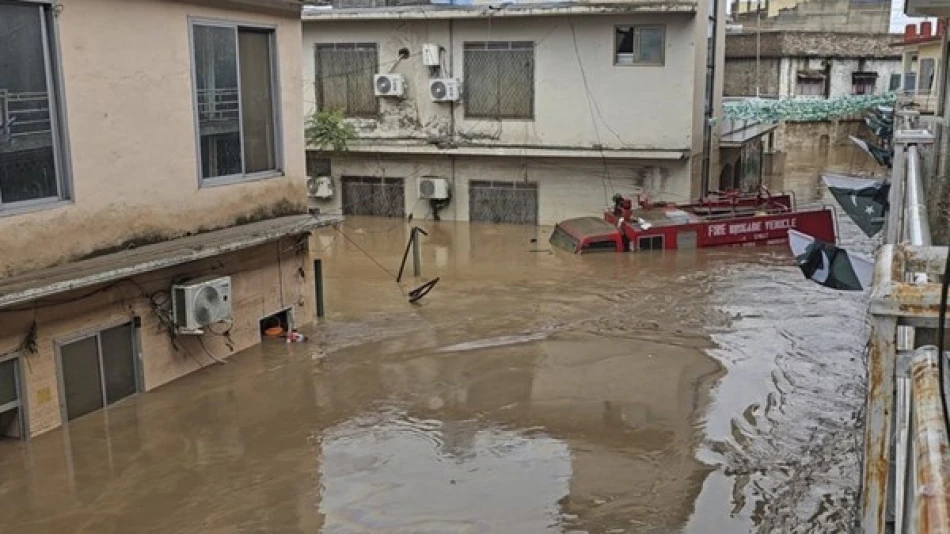
Pakistan Warns Citizens of Impending Flood Disaster, Urges Preparedness
Pakistan Braces for Eighth Monsoon Wave as Climate Crisis Deepens
Pakistan faces an unprecedented eighth wave of monsoon rains starting August 23, threatening nationwide flooding while the country still struggles to recover from previous deluges. The convergence of three separate weather systems signals a potentially catastrophic escalation in what has already become one of the most severe monsoon seasons in recent memory, particularly endangering the southern Sindh province and urban centers across the nation.
Mounting Weather Systems Create Perfect Storm
Tayyab Shah, an official with Pakistan's National Disaster Management Authority, warned Wednesday that three distinct weather systems are converging over the country, guaranteeing rainfall for the next 15 days. This meteorological alignment represents a dangerous escalation from the already severe conditions that have plagued Pakistan throughout the current monsoon season.
The National Disaster Management Authority's Emergency Operations Center has issued warnings for heavy rainfall bringing water levels between 50-100 millimeters across multiple regions within the next 24 hours. The northwestern Khyber Pakhtunkhwa province has already experienced significant casualties and widespread destruction from recent heavy rains.
Historical Context: An Unprecedented Monsoon Season
The approaching eighth monsoon wave breaks historical patterns for Pakistan's typical seasonal weather. Most monsoon seasons feature three to five distinct rainfall periods, making this year's extended pattern highly unusual and potentially linked to broader climate change trends affecting South Asian weather systems.
Pakistan's vulnerability to extreme weather has intensified over the past decade, with the country ranking among the top 10 nations most affected by climate change according to the Global Climate Risk Index. The 2010 floods affected over 20 million people, while 2022's catastrophic monsoons submerged one-third of the country and caused over $30 billion in damages.
Urban Areas Face Disproportionate Risk
Pakistani authorities have specifically highlighted urban flooding risks, reflecting a growing global pattern where cities struggle to manage extreme precipitation events. Pakistan's major urban centers, including Karachi, Lahore, and Islamabad, feature inadequate drainage infrastructure originally designed for much lower rainfall volumes.
The focus on urban flooding represents a shift in disaster preparedness thinking. Unlike rural flooding, which typically affects agricultural areas and can be somewhat predicted and managed, urban flooding creates cascading economic disruptions, threatens critical infrastructure, and can paralyze entire metropolitan regions within hours.
Economic and Infrastructure Implications
The continuous monsoon pressure threatens Pakistan's already fragile economic recovery. The country recently secured a $3 billion IMF bailout package, but repeated climate disasters strain government resources and complicate economic stabilization efforts. Each major flooding event typically costs Pakistan 1-2% of its GDP in immediate damages, not accounting for long-term reconstruction needs.
The timing proves particularly challenging as Pakistan attempts to rebuild infrastructure damaged in previous monsoon waves while simultaneously preparing for new threats. This cycle of destruction and reconstruction has become a defining characteristic of Pakistan's relationship with climate change, creating a perpetual state of emergency management.
Regional Climate Patterns Signal Broader Shifts
Pakistan's extended monsoon season reflects broader shifts in South Asian climate patterns that scientists have linked to changing ocean temperatures and atmospheric circulation patterns. The intensity and duration of this year's monsoon season align with climate models predicting more extreme and unpredictable weather events across the region.
The southern Sindh province, identified as particularly vulnerable to the eighth wave, contains Pakistan's economic hub of Karachi and crucial agricultural regions. Any significant flooding in Sindh could disrupt national food supplies and international trade through the Port of Karachi, Pakistan's primary maritime gateway.
As Pakistan braces for this latest meteorological challenge, the country's response will serve as a critical test of its disaster preparedness capabilities and climate adaptation strategies. The outcome may well determine whether Pakistan can break the cycle of perpetual climate crisis or faces an even more precarious future.
Most Viewed News

 Layla Al Mansoori
Layla Al Mansoori






